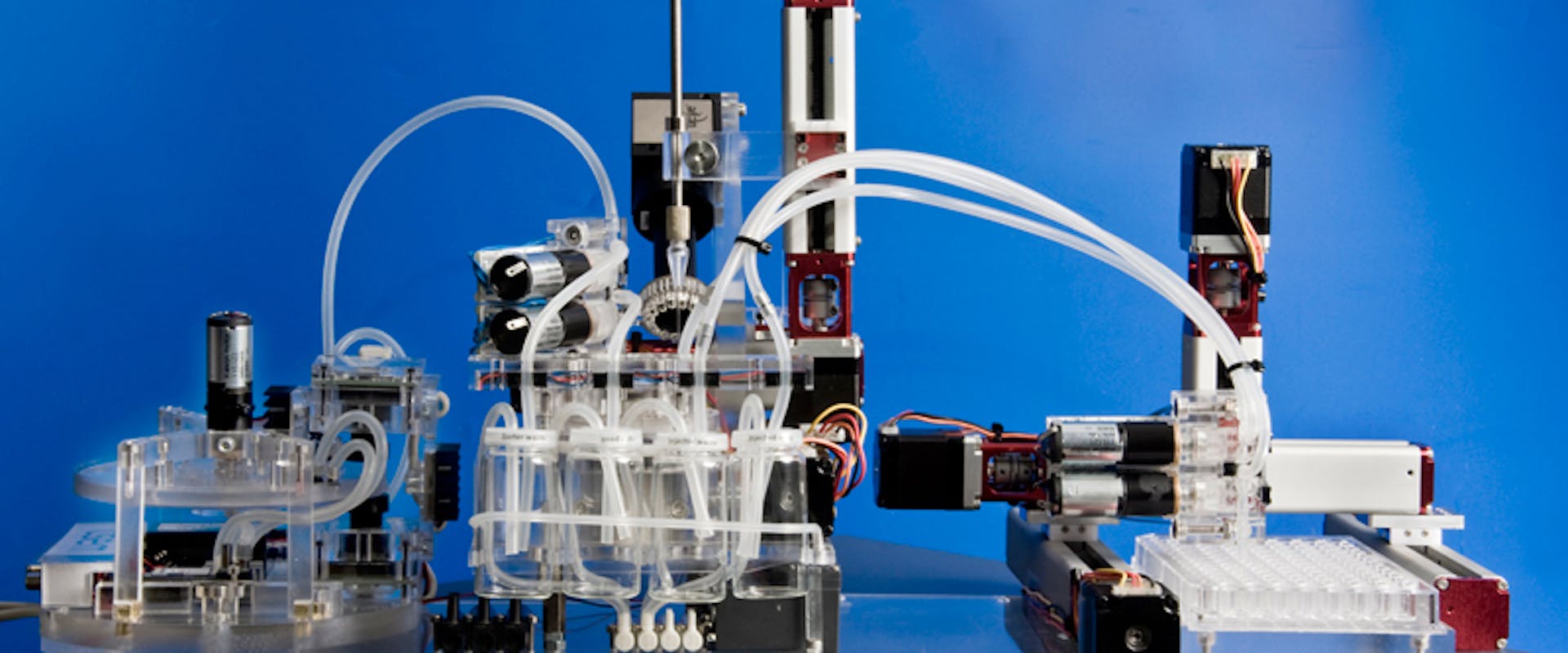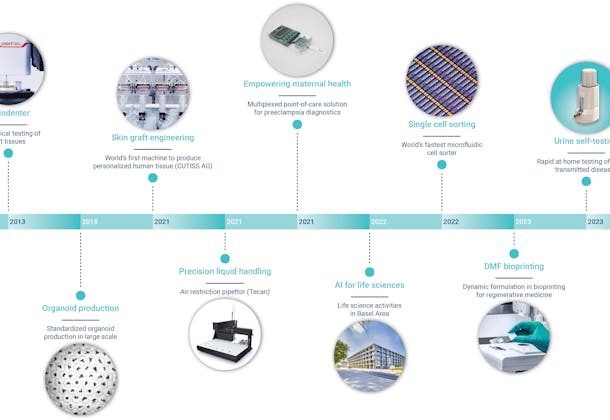Our automatic cell-handling system resolves these two problems: saving time and money and allowing researchers to concentrate on the characterization phase of their experiments. Thanks to our modular system - consisting of three main modules, the CellSorter, the MicroInjector, and the PlateFeeder - single biological entities are delivered-on-demand, making the cost-efficient CellSorter module ideally suited for integration into an automated process.
In one application, named ZebraFactor, the CellSorter is combined with the PlateFeeder to sort wild type and transgenic fertilized Zebrafish eggs, with and without chorion, into 96 multi-well plates. This is accomplished in less than 7 minutes (around 4 seconds per embryo) with a survival rate comparable to manual control (6.6% control, 7.6% cell sorter). Sorting can be based on size alone or, if a more complex self-learning vision algorithm is used, on a multitude of specific characteristics of the fertilized eggs, which normally would require an experienced lab technician to identify.
In another application, named XenoFactor, the CellSorter is combined with the MicroInjector to automatically sort individual Xenopus oocytes based on their quality, and dose the viable ones into a dedicated microinjection carousel where the oocytes are immobilized, microinjected, and finally collected in containers or, again, multi-well plates. The cycle time for one oocyte is about 10 seconds compared to the manual cycle time of 2 minutes (average for quality control, sorting, injecting, and collecting).
Besides offering the technology as it stands for biological entities such as Xenopus oocytes or Zebrafish eggs, CSEM is also interested in working with partners to develop the technology further for other applications and for smaller entities such as cell clusters or single cells



